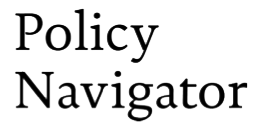- Share on LinkedIn
- Share on Bluesky
- Share on X
- Share by email
-
Link Copy link
Shipman inquiry
Harold Shipman had been convicted on 31 January 2000 of the murder of 15 of his patients while he was a GP. An independent public inquiry was chaired by Dame Janet Smith and produced six reports between 2002–05. The final report was published on 27 January 2005.
The Inquiry had previously determined that Shipman had killed no fewer than 215 patients between 1975–98. In light of new evidence, the final report extended the investigations to cover his time working as a house officer and in other posts between 1970–74, prior to beginning his career as a GP. Including the findings from these investigations, Dame Janet's final conclusion was that Shipman had killed approximately 250 patients in total.
Criticism of the coroner system
In the third report, the Inquiry had been critical of the coroner system and advocated a radical overhaul. It focused on why the processes around death registration and certification, and the coroner system, had failed to deter Shipman, or detect his wrongdoing.
Dame Janet highlighted issues such as the ability of a single doctor to certify deaths, which made it easier to conceal the reasons for a death and made those certifying death vulnerable to pressure.
Recommendations
The report proposed that a new coroner's office should be responsible for post-death processes, that all deaths should be reported to it for certification and that it would have powers to undertake targeted investigations. Furthermore, coroners should undergo training to equip them to identify cases requiring investigation.
It was recommended that certification should be based on two forms. One form would confirm the death, providing an official record of the circumstances. The second form would be completed by the doctor who had treated the diseased person during the last illness, or by the deceased's usual medical practitioner.
Criticism of monitoring conduct
In December 2004, the fifth report had noted that, in the past, primary care organisations responsible for contact with general practitioners did not have monitoring systems in place that might have enabled them to detect irregular conduct.
The fact that no complaints were raised about Shipman between 1976 and 1998 pointed to the general reverence with which medical professionals had been held and the lack of appropriate reporting mechanisms.
While the inquiry agreed that there had been changes in the approach to monitoring, Dame Smith was highly critical of the culture within the General Medical Council, suggesting it had not always put the interests of patients first.
Smith, J.
Third report - death certification and the investigation of deaths by coroners
The Shipman Inquiry; 2003.
Smith, J.
Safeguarding Patients; Lessons from the Past - Proposals for the Future.
The Shipman Inquiry; 2004
The Shipman Inquiry.
Reports.
The Shipman Inquiry; 2019.

